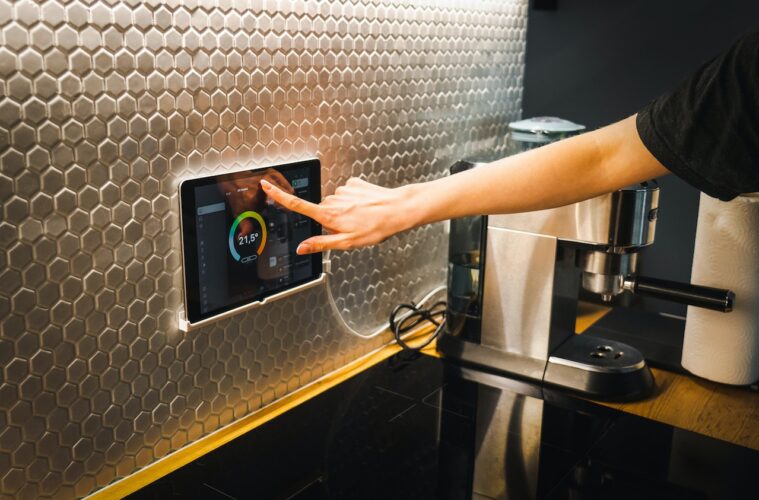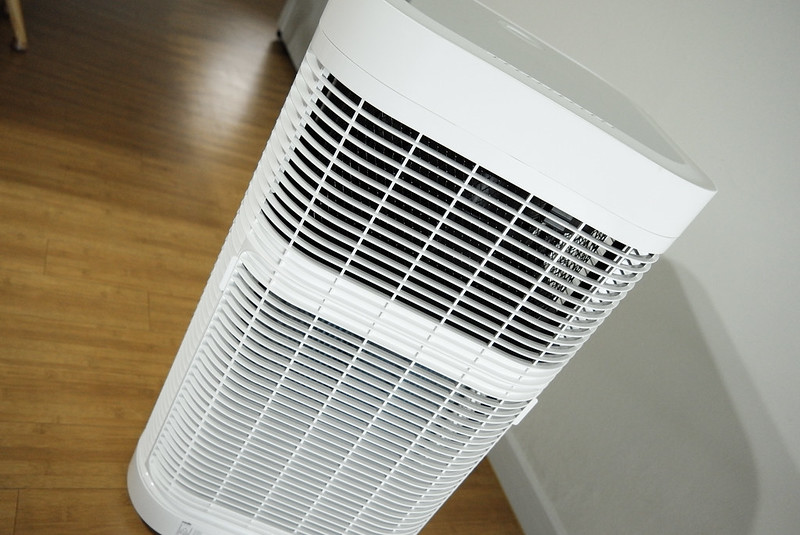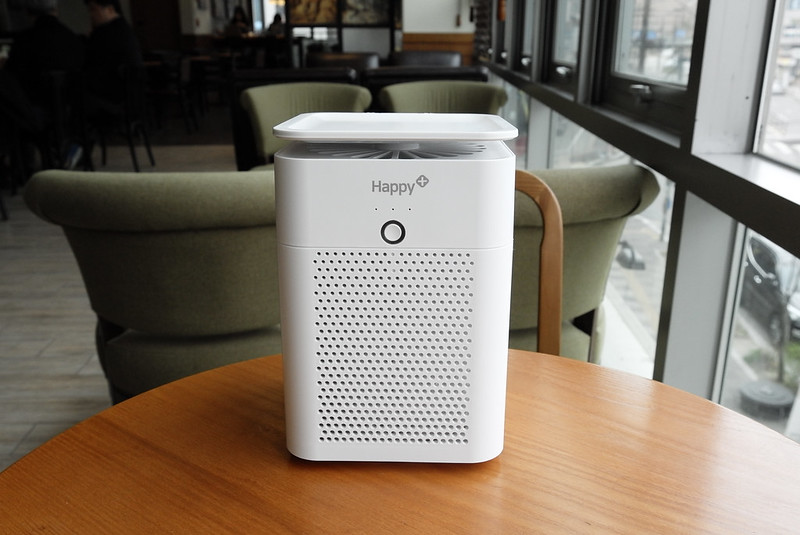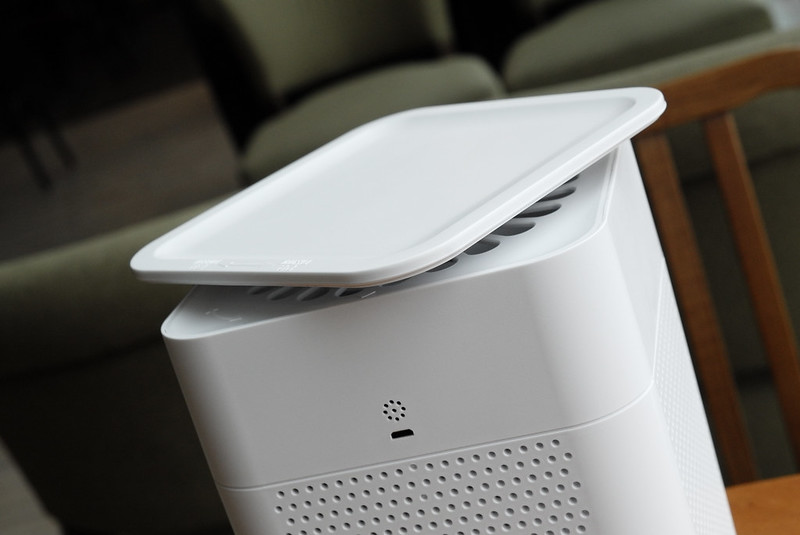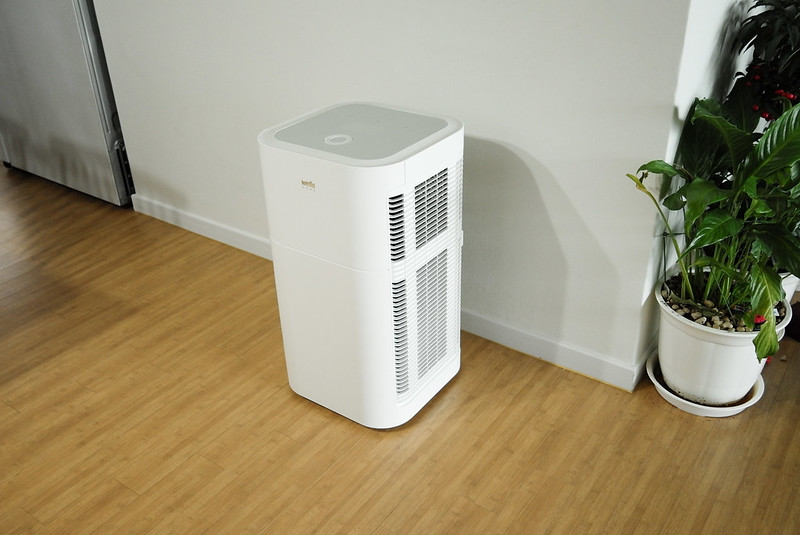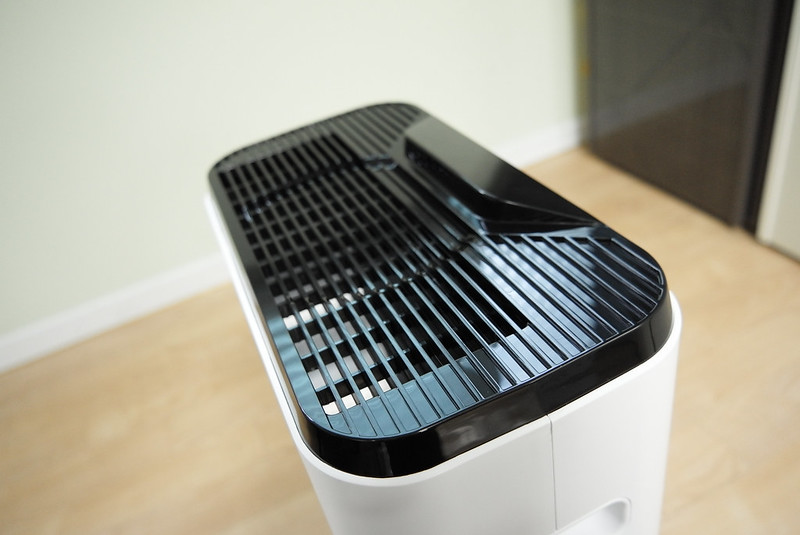Mold is a common household issue that can have significant impacts on health and indoor air quality. With the increasing prevalence of mold-related illnesses, many people are searching for effective solutions to combat mold growth and improve the air they breathe. One such solution is an air purifier specifically designed to address mold.
Air purifiers have become an essential tool in maintaining a healthy environment, especially for those who are sensitive or allergic to mold spores. These devices work by filtering out airborne particles, including mold spores, to help reduce exposure and minimize health risks. With various types of air purifiers on the market, it’s essential for consumers to understand which features are most effective in combating mold and improving overall air quality.
Key Takeaways
- Air purifiers can help address mold concerns and improve indoor air quality.
- Different filters and features are essential for effectively targeting mold spores.
- Smart technology and energy-efficiency standards play a role in air purifier performance.
Understanding Mold and Its Impact on Health
Mold is a type of fungus that can be found both indoors and outdoors. It thrives in damp, humid conditions and reproduces by releasing tiny particles called mold spores. These spores can become airborne, making it easy for them to enter and settle in various parts of our homes.
Exposure to mold and its spores can lead to numerous health problems, especially for individuals with pre-existing respiratory diseases or allergies. Mold spores can irritate the respiratory system, leading to symptoms such as coughing, wheezing, and nasal congestion. Prolonged exposure can exacerbate these symptoms and cause more severe health issues like asthma or bronchitis.
Mold allergies are quite common, presenting symptoms similar to those of other airborne allergens, such as sneezing, itchy eyes, and skin rashes. For those with mold allergies, the presence of mold can trigger an immune response that worsens their existing symptoms and can potentially hinder their overall quality of life.
When it comes to mold growing in our homes, certain areas are more susceptible than others. Bathrooms, kitchens, basements, and crawl spaces are prime locations for mold growth due to their increased humidity levels. When mold growth is left unchecked, it can lead to more extensive mold problems that may require professional intervention to rectify.
Preventing mold exposure and the potential health issues it can cause requires proper maintenance and vigilance. By controlling humidity levels, routinely inspecting areas prone to mold growth, and addressing any mold problems promptly, individuals can minimize their risk of experiencing the negative health effects associated with mold exposure.
Air Quality and Mold
Maintaining good indoor air quality is essential for the health and well-being of home occupants. Indoor pollutants, such as mold spores, are common and can have adverse effects on individuals, particularly those with allergies or respiratory problems.
Mold spores thrive in high humidity and moist environments, making them a concern for many households. These microorganisms reproduce through the release of spores, which are airborne particles that can easily spread throughout a home, making it crucial to monitor and control indoor air quality.
Indoor pollutants are substances created or released within the home that negatively affect air quality. Mold is a prevalent indoor pollutant, often resulting from moisture issues, such as leaks or condensation. Other common indoor pollutants include chemicals from cleaning products, dust, and pet dander.
Outdoor pollution can also impact indoor air quality. Pollen, vehicle exhaust, and industrial emissions may enter buildings through open windows or doors, contributing to the presence of mold spores and other pollutants. This is particularly important to consider for those living in urban areas with high levels of outdoor pollution.
Humidity plays an essential role in the growth of mold, as most molds require moisture to proliferate. In areas with high levels of humidity, it is crucial to maintain adequate ventilation and ensure that moisture is appropriately controlled. Dehumidifiers and air conditioning units can help in regulating humidity levels to reduce the risk of mold growth.
Moisture issues in the home can contribute to the presence of mold. Common sources of moisture include leaks from roofs, pipes, and windows, as well as excessive condensation on cold surfaces. Ensuring that these moisture issues are adequately addressed can significantly reduce mold growth and improve air quality.
In conclusion, maintaining good indoor air quality is vital for the prevention of mold growth and the creation of a healthy living environment. By monitoring and managing humidity, addressing moisture issues, and controlling indoor and outdoor pollutants, individuals can protect their homes and families from the potentially harmful effects of mold.
The Role of Air Purifiers in Controlling Mold
Air purifiers play a critical function in reducing and controlling mold growth within indoor environments. Mold spores, which are a common allergen, can easily spread through the air and cause various health problems. By using air purifiers for mold, the risk of mold-related health issues can be significantly minimized.
One of the primary roles of an air purifier is removing mold spores from the air. They do this by circulating the air within a room and passing it through a series of filters designed to capture different particle sizes, including mold spores. High-Efficiency Particulate Air (HEPA) filters are often considered the best air purifiers for mold, as they can capture particles as small as 0.3 microns in diameter with an efficiency of 99.97%.
Apart from HEPA filters, some air purifiers also use UV-C light technology to kill mold spores. UV-C light damages the DNA of mold spores, making them unable to reproduce and spread. This additional layer of protection can be helpful in controlling mold growth, especially in damp or humid conditions where mold tends to thrive.
Another way that air purifiers can help control mold is by reducing humidity levels in the room. Some air purifiers come equipped with dehumidifying capabilities, which can help maintain an optimum humidity level (between 30% and 50%). By doing so, these devices effectively prevent mold growth by depriving mold spores of the moisture they need to grow.
In addition to purifying the air, the use of air purifiers can also help in preventing mold growth on surfaces such as walls, ceilings, and floors. By capturing airborne mold spores before they have a chance to settle, air purifiers can play a valuable role in ensuring that mold does not take hold on household surfaces.
In conclusion, air purifiers can be effective tools in controlling mold presence within indoor spaces. By making use of technologies such as HEPA filters, UV-C light, and dehumidification features, air purifiers can significantly reduce the risk of mold growth and its associated health concerns.
Key Features of Air Purifiers for Mold
When choosing an air purifier for mold, several key features should be considered to ensure effective mold removal and improved air quality.
HEPA Filters: High Efficiency Particulate Air (HEPA) filters are critical in air purifiers for mold. True HEPA filters can capture 99.97% of particles as small as 0.3 microns, including mold spores. It is essential to look for a purifier with a true HEPA filter to effectively remove mold from the air.
Activated Carbon: Activated carbon filters are useful for adsorbing odors caused by mold and mildew. This type of filter works by trapping volatile organic compounds (VOCs) and other pollutants, reducing unpleasant smells in addition to filtering mold spores.
Pre-filter: A pre-filter is helpful in prolonging the life of the HEPA filter by capturing larger particles such as dust, hair, and pet dander before they reach the main filter. Some pre-filters can be cleaned and reused, which can save money on filter replacement costs.
Fan Speed and Noise Levels: Adjustable fan speeds allow for better control over the air purifier’s performance. Higher fan speeds result in a faster Clean Air Delivery Rate (CADR), but may also produce more noise. Select a purifier with multiple fan speeds and a noise level that is suitable for your environment.
CADR Ratings: The Clean Air Delivery Rate (CADR) measures an air purifier’s effectiveness in filtering dust, pollen, and smoke particles. A higher CADR rating indicates more efficient filtration. Choose a purifier with a sufficient CADR rating for the room size in which it will be used.
UV-C Light and Ionizers: Some air purifiers include UV-C lights or ionizers to help kill mold and other airborne germs. While these technologies can be beneficial, they may generate ozone, which can be harmful to the environment and health. Consider these features carefully when selecting an air purifier.
Room Size and Cubic Feet per Minute (CFM): The recommended room size for an air purifier is determined by its CFM rating, which indicates how much air the purifier can filter per minute. Ensure the purifier’s CFM is sufficient for the size of the room where it will be used.
Energy Efficiency: Air purifiers can significantly impact energy consumption. Look for energy-efficient models with Energy Star certification to minimize energy use and save on electricity costs.
Control Panel and Smart Features: Modern air purifiers may come with convenient features such as touchscreen control panels, remote controls, or smart capabilities. These options can help monitor and easily adjust the purifier’s settings based on your needs.
Types of Filters and Their Efficiency
Air purifiers for mold use various types of filters to clean indoor air. These filters help eliminate allergens like pollen, dust, and pet dander, as well as bacteria and mold spores, which may exacerbate allergies and asthma.
HEPA Filters are a popular choice for their ability to capture particles as small as 0.3 microns, effectively trapping most allergens, including pet hair, pollen, and mold spores. They do not, however, eliminate bacteria or odors.
Activated Carbon Filters contain porous carbon to absorb and neutralize odors and chemicals. While they are efficient at removing smells and volatile organic compounds (VOCs), they are less effective at trapping allergens like pollen and mold spores.
Sanitizing UV Lights use ultraviolet (UV) radiation to kill microorganisms like mold spores, bacteria, and viruses. These lights can be an effective addition to the filtration process, but they do not capture allergens such as dust and pollen.
PCO and PECO Tech Filters use photocatalytic oxidation (PCO) and photo electrochemical oxidation (PECO) technologies to destroy pollutants in the air. Both PCO and PECO filters chemically convert harmful substances, including allergens, into harmless compounds. While they show promising results, their efficiency in comparison to traditional filters is still under debate.
In summary, various filter technologies effectively address different aspects of air pollution. For comprehensive protection against mold and other allergens, it is advisable to use an air purifier with a combination of filters, such as a HEPA filter combined with an activated carbon filter or sanitizing UV light.
Popular Air Purifier Models for Mold
Levoit Core 300 is one of the best air purifiers for mold, featuring a True HEPA filter that can effectively remove mold spores from the air. The 360-degree air intake and discharge ensure clean and fresh air circulating throughout the room. The compact and sleek design makes it a great addition to any living space.
Bissell Air320 Smart Air Purifier is another popular option for tackling mold. With its stylish design and advanced filtration system, it effectively captures mold spores, dust, and allergens. The easy-to-use digital display and smart control features allow users to adjust the settings according to their needs.
The Levoit LV-PUR131S is an efficient choice for larger spaces. Equipped with a True HEPA filter, it effectively removes mold particles along with other airborne contaminants. The Smart Wi-Fi control function makes it easy to monitor and control the air purifier remotely.
GermGuardian AC4825 offers a highly-effective 3-in-1 filtration system, which includes a True HEPA filter, activated charcoal filter, and UV-C light. This combination effectively captures mold spores and neutralizes any remaining airborne particles, making it a good choice for mold-prone areas.
The Medify MA-25 is a compact and powerful air purifier, featuring a Medical Grade H13 True HEPA filter that effectively eliminates mold spores from the air. Its modern design and affordable price make it a popular option for many.
Alen BreatheSmart 45i Purifier is especially designed for mold problems, thanks to its advanced filter technology and customized filter options. Its modern design and impressive performance make it a popular choice for those seeking a comprehensive solution for mold issues.
NuWave OxyPure Smart Air Purifier is equipped with an advanced 5-stage filtration system that effectively removes mold spores, allergens, and contaminants. Its smart sensor technology and air quality indicators ensure efficient and effective purification.
For budget-conscious consumers, Levoit Vital 100 is an affordable option that still delivers impressive performance. Its combination of a True HEPA filter and an activated carbon filter effectively removes mold spores and other airborne pollutants from the room.
Honati Air Purifier is also a popular choice for mold removal. With its compact and portable design, this air purifier features a 3-stage filtration system that includes a True HEPA filter, capturing mold spores and other allergens efficiently.
Hathaspace Smart Air Purifier 2.0 offers a 5-stage filtration process, ensuring thorough removal of mold spores and other contaminants. Its smart features and modern design make it a popular choice for those looking for a high-performance air purifier.
Lastly, the Greenote Air Purifier is known for its compact size and powerful filtration system. The combination of a True HEPA filter and an activated carbon filter effectively captures mold spores and other airborne pollutants, making it a reliable choice for mold removal.
Overall, all of these air purifiers are highly effective in combating mold and improving indoor air quality, making them popular choices for consumers seeking a solution to their mold problem.
Integrating Air Purifiers with Smart Technology
Air purifiers for mold have evolved immensely, now incorporating smart technology for a seamless and efficient user experience. By integrating features that support voice assistants like Amazon Alexa and Google Assistant, controlling the device has become more effortless and hands-free.
Most smart air purifiers come with a compatible app that allows users to monitor and control the air quality in their homes from their smartphones. With IoT technology, these purifiers can be easily connected to a home network, making it simple to adjust settings, customize schedules, and even receive notifications regarding filter maintenance.
Moreover, pairing air purifiers with smart assistants like Alexa and Google Assistant not only provides convenience but also customization. Users can create personalized voice commands and routines to automatically turn the device on or off, adjust settings, and receive air quality status updates. Integration with other smart home devices, such as thermostats and smart plugs, enables a truly connected and automated home environment.
Some smart air purifiers also have features like:
- Air quality sensors: Constantly monitoring the air quality in the room to maintain optimal conditions.
- Filter life indicator: Notifying users when it’s time to replace the filter.
- Energy efficiency: Automatically adjusting settings based on air quality to save energy.
By embracing smart technology, air purifiers for mold have transformed into adaptive and user-friendly devices, delivering improved convenience and efficiency to homeowners.
Health, Regulatory, and Energy-Efficiency Standards
Air purifiers for mold are subject to various health, regulatory, and energy-efficiency standards to ensure their safety and effectiveness. The U.S. Environmental Protection Agency (EPA) and the Centers for Disease Control (CDC) provide guidelines on air purification standards and the prevention of mold-related health issues. These organizations emphasize the importance of maintaining indoor air quality to reduce the risk of respiratory and allergy-related symptoms.
A key performance indicator for air purifiers is their ability to filter particulate matter and mold spores. This is often measured using High Efficiency Particulate Air (HEPA) filtration standards. HEPA filters are capable of trapping particles as small as 0.3 microns in size at an efficiency rate of 99.97%. Air purifiers with HEPA filters are considered highly effective in removing mold spores from the air.
In addition to HEPA filtration, the EPA recommends looking for air purifiers certified by the Association of Home Appliance Manufacturers (AHAM). This certification indicates that the appliance has been tested and meets stringent performance standards for its Clean Air Delivery Rate (CADR), which measures the appliance’s effectiveness in filtering out pollen, dust, and tobacco smoke particles.
Energy efficiency is another important consideration when choosing an air purifier. The U.S. Department of Energy (DOE) has established energy-efficiency standards for various consumer products, including air purifiers. For optimal energy conservation, it is recommended to look for air purifiers with an ENERGY STAR label. This certification indicates that the appliance meets strict energy-efficiency requirements set by the DOE and the EPA.
To summarize, when selecting an air purifier for mold, consider the following:
- Ensure adherence to guidelines provided by the EPA and the CDC
- Look for HEPA filtration capability for effective mold removal
- Check for AHAM certification
- Opt for ENERGY STAR-certified appliances for energy efficiency
Managing and Preventing Mold Growth
Mold growth can pose a significant threat to one’s health and the indoor environment. Managing and preventing mold growth effectively requires a combination of strategies, including maintaining proper humidity levels, regularly cleaning surfaces, and using air purifiers with HEPA filters.
Dehumidifiers play a crucial role in managing mold growth by reducing the moisture levels in the air. By maintaining a humidity level lower than 60%, it becomes challenging for mold spores to grow and thrive. Additionally, dehumidifiers can help prevent mold in damp and humid areas, such as basements and bathrooms, by removing excess moisture from the air.
It is essential to be vigilant in identifying the warning signs of mold growth in the home. These may include a musty odor, visible mold spots on surfaces, or increased allergic reactions among the occupants. Early detection and remediation can help prevent extensive mold problems and the related health issues.
Air purifiers equipped with HEPA filters can aid in managing and preventing mold growth. These advanced filters are capable of capturing mold spores as small as 0.3 microns, effectively reducing the number of spores circulating in the indoor air. However, it is essential to ensure the ease of filter replacement, as a clogged or old filter may hinder the effectiveness of the air purifier.
To combat mold growth, regularly clean surfaces, especially in areas prone to dampness and humidity, such as kitchens and bathrooms. Wiping down surfaces with a mold-killing solution and properly ventilating the rooms can help keep mold from growing and spreading.
In conclusion, managing and preventing mold growth requires a combination of dehumidification, regular cleaning, and utilizing air purifiers with HEPA filters. By following these strategies, one can maintain a healthier and cleaner indoor environment.
Conclusion
Air purifiers for mold play a crucial role in improving indoor air quality and safeguarding people’s health. They efficiently reduce mold spore concentration, contributing to allergy relief and a cleaner environment. Investing in an air purifier for mold is a wise decision for individuals suffering from allergies and seeking better overall air quality in their living spaces.
Not all air purifiers are the same, as their effectiveness varies based on filter types, room size, and their Clean Air Delivery Rate (CADR). For the best results, it is recommended to opt for devices with True HEPA filters, which are capable of capturing particles as small as 0.3 microns, including mold spores.
In addition to air purifiers, preventative measures such as proper ventilation, humidity control, and regular cleaning can be effective in addressing mold growth. By combining the use of air purifiers with these strategies, people can achieve a healthier and safer indoor environment.
Frequently Asked Questions
What type of air purifier is most effective against mold?
HEPA (High Efficiency Particulate Air) filters are the most effective type of air purifier for capturing mold spores. These filters can trap particles as small as 0.3 microns, which includes mold spores. Look for air purifiers that are designed specifically for mold, featuring HEPA filters and activated carbon filters to minimize mold odors.
Can air purifiers help with mold and mildew odor?
Air purifiers with an activated carbon filter can help reduce mold and mildew odors. Activated carbon filters work by adsorbing unpleasant odors and volatile organic compounds (VOCs), which are often emitted by mold. This combination of HEPA and activated carbon filters provides a two-pronged approach to combating mold and its associated smells.
Are Dyson air purifiers suitable for combating mold?
Dyson air purifiers equipped with HEPA filters can effectively capture mold spores. However, not all Dyson purifiers feature an activated carbon filter for odor reduction. Be sure to review the specific model you’re interested in to ensure it has both HEPA and activated carbon filters if you’re looking for complete mold control.
Do air purifiers or dehumidifiers work better for mold issues?
Air purifiers and dehumidifiers serve different purposes but can be used together for best results in mold control. Air purifiers capture mold spores to improve air quality, while dehumidifiers reduce the moisture in the air, making it less conducive to mold growth. Since mold thrives in damp environments, dehumidifiers are particularly useful as a preventive measure.
Is there a specific air purifier that works well in basements with mold?
Air purifiers specifically designed for mold removal, featuring HEPA and activated carbon filters, can work effectively in basements. However, it’s essential to choose a unit with adequate coverage for the size of your basement. Also, consider combining the air purifier with a dehumidifier to maintain optimal humidity levels and prevent mold growth.
Where can I purchase a high-quality air purifier for mold?
High-quality air purifiers for mold can be purchased at home improvement stores, department stores, or online retailers like Amazon. It’s essential to compare multiple models and read reviews from verified customers to ensure you’re making an informed decision, keeping in mind that features, such as HEPA and activated carbon filters, are necessary for effective mold control.

